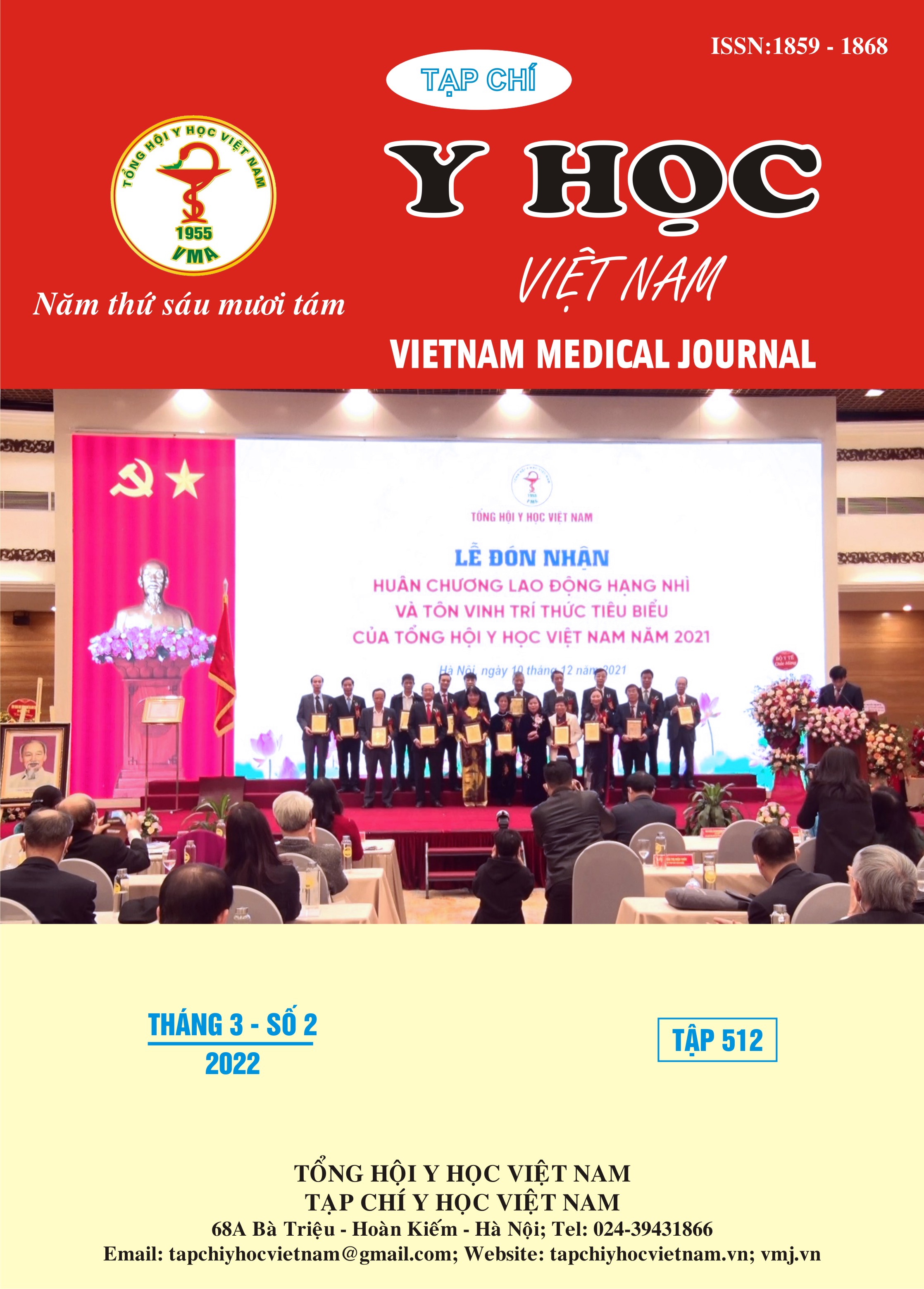RESEARCH ON PROGNOSTIC FACTORS OF ISCHEMIC STROKE PATIENTS WITH CARDIOVASCULAR DISEASE
Main Article Content
Abstract
Background: Cerebral infarction is the most common type of cerebrovascular accident, accounting for 85%, cerebral infarction due to cardiovascular disease accounts for about 15% of the causes of cerebral stroke. For patients with cerebral infarction, cardiovascular disease increases the risk of death and severe sequelae. Objectives: To evaluate some predictive factors of cerebral infarction with cardiovascular disease. Methods: 86 patients were diagnosed with cerebral infarction with inpatient cardiology at the Department of Neurology and the Institute of cardiovascular disease at Bach Mai Hospital from August 2014 to August 2015. cross sectional description. Results: The highest prevalence was found in the age group over 50, 64 patients, 74.4%, male / female = 1.6. The average Glasgow coma score is 12.9; 57% of patients with cerebral infarction have a small area on the screen. Heart valves (40 patients) and atrial fibrillation (27 patients), accounting for 46.5% and 31.4%, respectively. There was no difference between levels of cardiovascular rhythm recovery. There was a strong correlation between Glasgow coma score at onset and size of lesions on CT at baseline levels. Conclusion: Infarct cerebral infarction occurs mainly in people aged 50-70, men are more common than women. The average Glasgow coma score of cerebral infarction patients with high cardiovascular disease. The two groups of cardiovascular disease common in patients with cerebral infarction are valvular heart disease and atrial fibrillation. There is no difference between levels of cardiac rhythm recovery in cardiovascular disease groups, regardless of cerebral infarction due to heart disease. The lower the Glasgow score and the greater the size of the lesions on the CT the greater the degree of disability of the patient.
Article Details
Keywords
cerebral infarction, cardiovascular disease
References
2. Lương Tuấn Thoại (2005), “Nghiên cứu một số đặc điểm lâm sàng và cận lâm sàng của tai biến mạch máu não do bệnh van tim”. Luận văn Thạc sĩ Y học, Trường Đại Học Y Hà Nội.
3. Trần Thị Thanh (2012). “Nghiên cứu áp dụng thang điểm NIHSS đánh giá bệnh nhân nhồi máu não giai đoạn cấp tại Khoa Thần Kinh, Bệnh viện Bạch Mai”, Luận văn BSNT, Trường ĐH Y Hà Nội.
4. Phạm Gia Khải, Trần Song Giang, Nguyễn Minh Hùng và cộng sự (2004). “Tình hình tai biến mạch máu não tại Viện Tim mạch Việt Nam (1/1996-12/2002)”, Tạp chí Y học Việt Nam, số đặc biệt tháng 8/2004, tập 301.
5. Kanter M.C. (1996). ).“Neurological aspects of Cardiogenic Embolism”, Cardiogenic embolis, 21-25.


